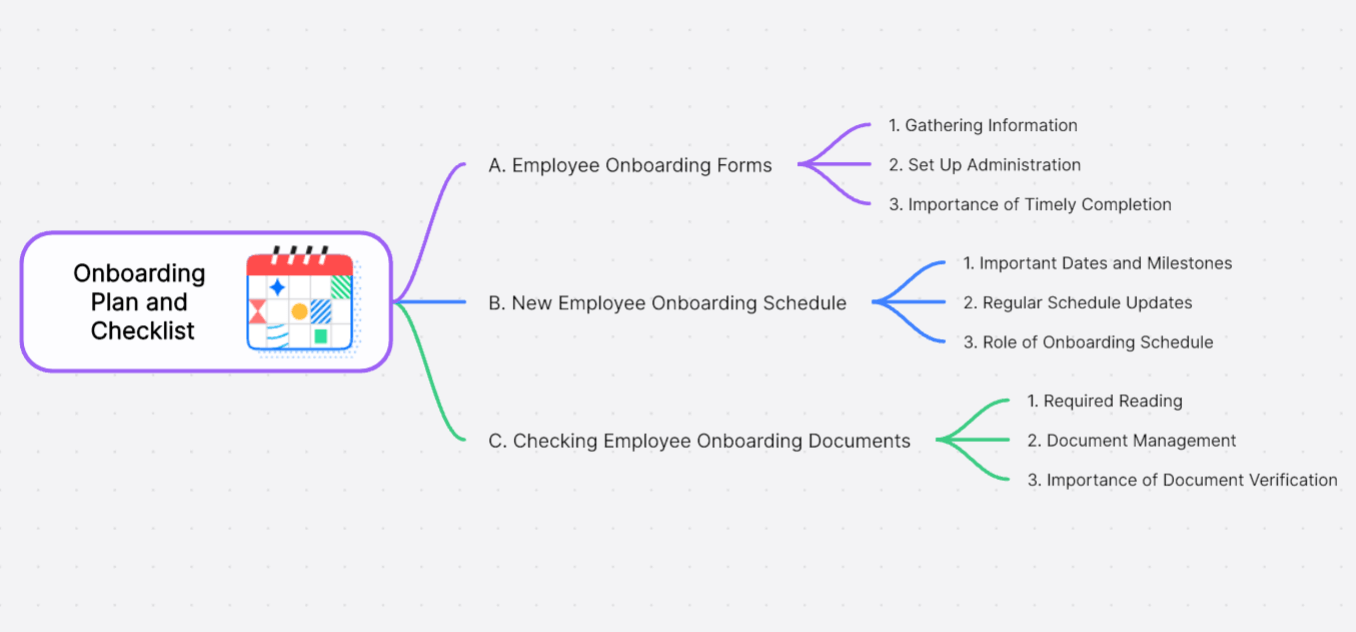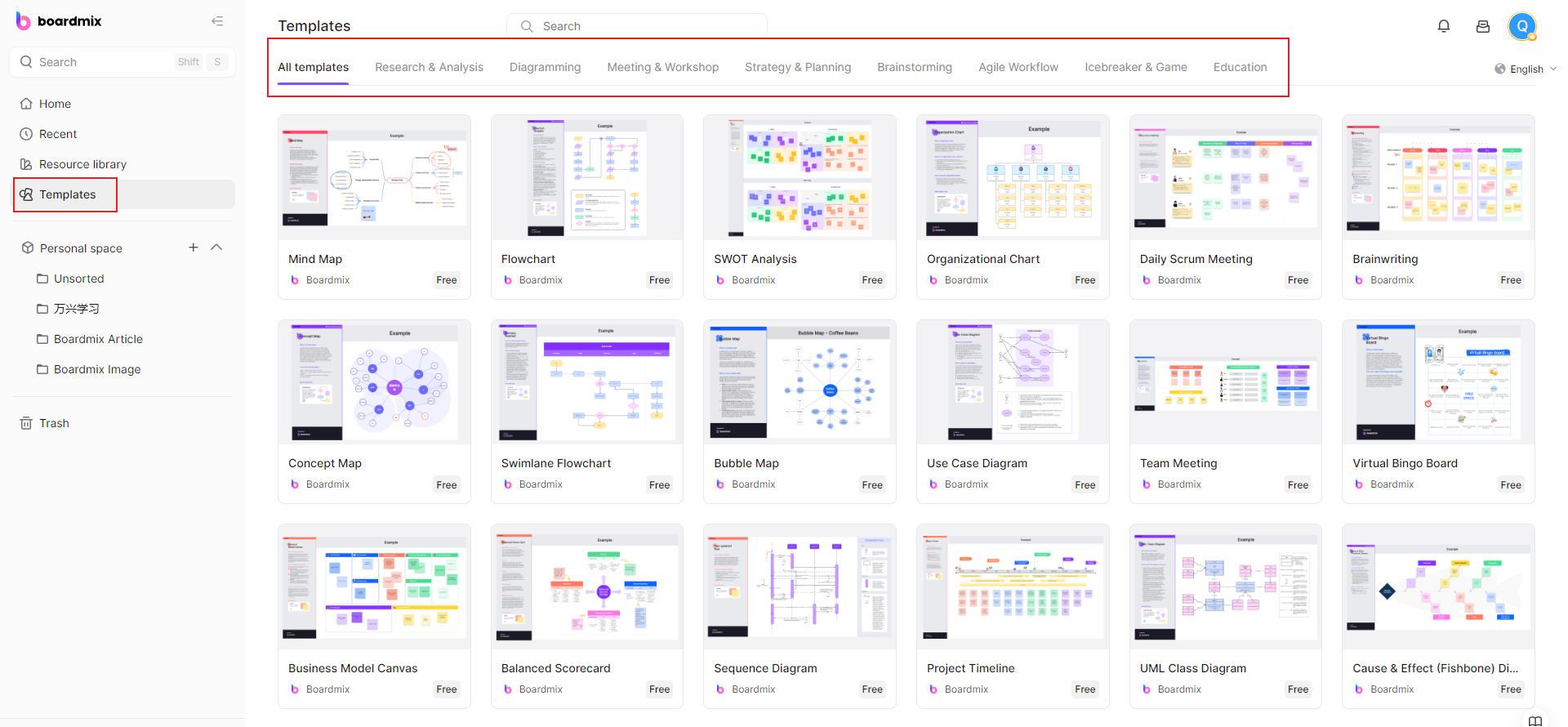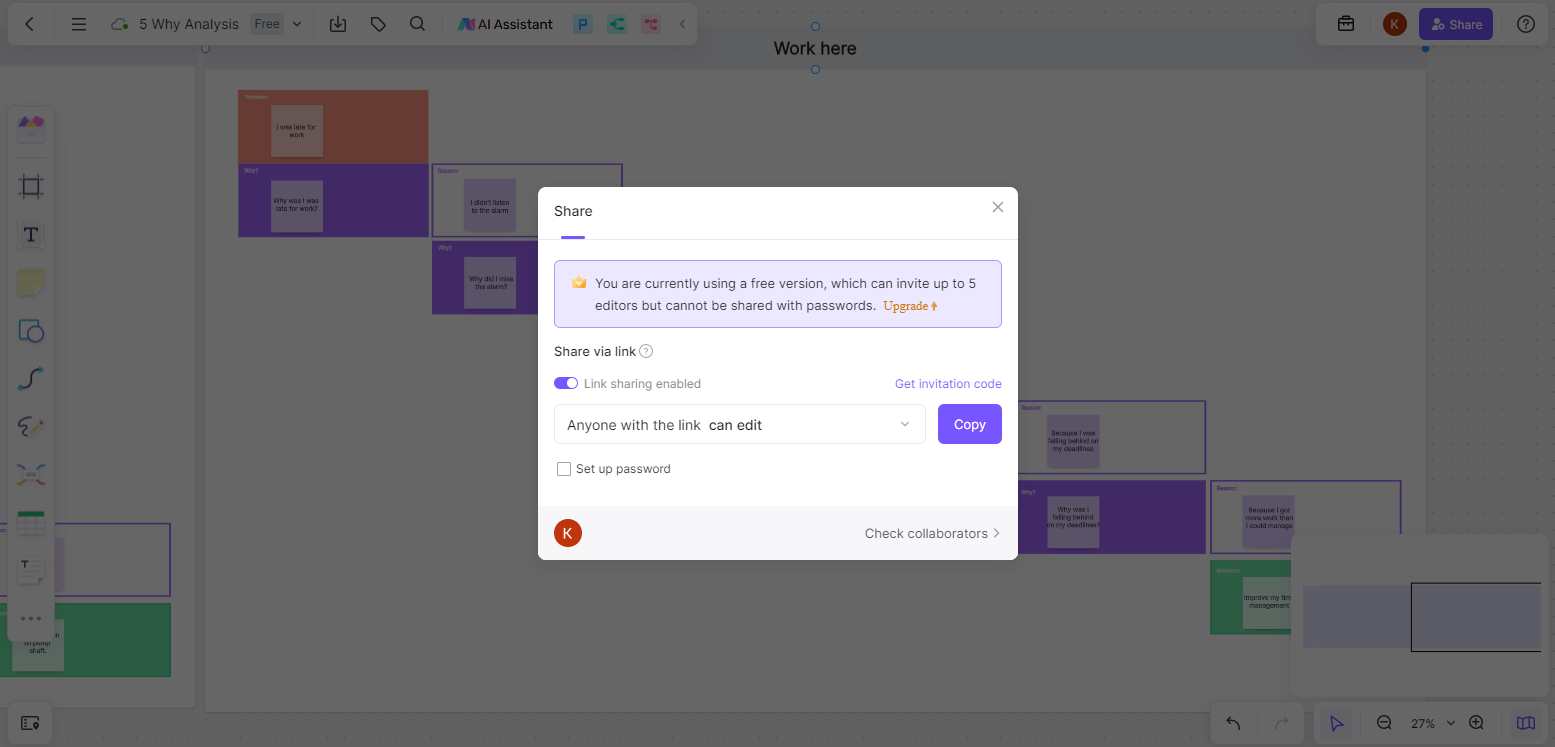Onboarding is a crucial process that helps new employees integrate into a company and become productive quickly. A well-crafted employee onboarding checklist is a key tool in this process. This guide will walk you through creating a comprehensive checklist covering various aspects of employee onboarding and use the onboarding checklist template to create one.
Part 1: What Should the Onboarding Plan and Checklist Include?
With a clear employee onboarding procedure, each new employee has everything they need from day one. A comprehensive employee onboarding plan should outline a structured approach to familiarize new employees with a company's culture, policies, and workflows. This plan is tailored to provide a thorough understanding of their roles and responsibilities, as well as introduce them to key team members and resources.

1. Completing Employee Onboarding Forms
One of the first steps in our process involves completing the necessary Employee Onboarding Forms. These forms gather crucial information and help us set up payroll, benefits, and other administrative essentials promptly. Ensuring these forms are filled out accurately and timely is vital to avoid any delays in onboarding.
2. Defining New Employee Onboarding Schedule
A well-defined New Employee Onboarding Schedule is also part of the checklist. This schedule includes important dates and milestones, such as orientation sessions, training programs, and initial performance reviews. Sticking to this schedule helps new employees stay on track and feel supported throughout their transition.
3. Checking Employee Onboarding Documents
Lastly, the staff onboarding checklist ensures that all Employee Onboarding Documents are in order. These documents include company policies, employee handbooks, and any other relevant materials that new hires need to review and acknowledge. Keeping these documents organized and accessible is crucial for maintaining compliance and clarity.
By following our comprehensive staff onboarding checklist, we can provide a consistent and welcoming experience for all new employees, setting the stage for their success and integration into our team.
Part2: New Employee Onboarding Schedule
The onboarding process is crucial for integrating new staff members into the organization. It involves several key steps to ensure a smooth transition and to make new employees feel welcomed and prepared for their roles.

1. Pre-boarding
Before the new hire’s first day, certain preparatory tasks need to be completed. This includes sending a welcome email with an overview of the first week’s agenda and any necessary documents to review. Setting up their workspace, including their computer, phone, and any other required equipment, is also essential. Ensuring all access credentials and IT setup are ready beforehand can prevent delays and frustrations on the first day.
2. First Day
On the new employee's first day, it's important to give them a warm welcome and introduce them to their team members. A tour of the office and facilities should be conducted, highlighting important areas such as restrooms, break rooms, and emergency exits. An initial meeting with their direct supervisor can provide clarity on expectations and initial assignments. Providing a welcome package that includes company-branded materials, an employee handbook, and other relevant information can make them feel appreciated and valued.
3. First Week
Throughout the first week, the new hire should be gradually introduced to their job responsibilities and company culture. Scheduled meetings with key team members and stakeholders can help them understand the organizational structure and workflows. Training sessions on essential systems and processes should be conducted to ensure they are well-equipped to start contributing to their role. Encouraging questions and providing regular feedback can help identify any areas where they may need additional support.
4. First Month
As the first month progresses, it's important to continue providing support and feedback to the new employee. Regular check-ins with their supervisor can help address any challenges and track progress. Opportunities for social integration, such as team lunches or informal gatherings, can foster a sense of belonging. Offering additional training or professional development opportunities can also be beneficial as they settle into their role.
5. Ongoing Support
Even after the initial onboarding period, ongoing support is crucial for long-term success. Continuous feedback and performance reviews can help new employees stay aligned with their goals and the company’s expectations. Encouraging participation in company events and activities can further integrate them into the corporate culture. Providing mentorship or coaching can also aid in their professional growth and development within the organization.
By following these steps, organizations can ensure a comprehensive and effective onboarding process that sets new employees up for success from day one.
Part3: Steps to Write Onboarding Checklist with Template
Joining a new company or role is a significant transition, and a well-crafted onboarding checklist can greatly facilitate this process. Nest, we will walk you through the steps to create an effective staff onboarding checklist using the Boardmix platform. Boardmix is renowned for its customizable templates and user-friendly interface, making it an excellent tool for creating, saving, sharing, and collaborating on such checklists.
Step 1: Log in to Your Boardmix Account
The first step is straightforward. Navigate to the Boardmix website on your preferred web browser and log in to your account using your registered credentials. If you don't have an account yet, you can quickly create one by clicking on the "Sign Up" button and following the prompts.

Step 2: Search and Choose Onboarding Checklist Template
Once you've logged in, it's time to choose your template. On the Boardmix dashboard, you'll see a "Templates" option. Click on it and then use the search bar to type in "Onboarding Checklist". Boardmix will then present you with a variety of ready-made onboarding checklist templates. Take your time to review these options and select the one that best aligns with your requirements.

Step 3: Customize and Edit Your Onboarding Checklist
After selecting your template, it's time to customize it to fit your specific needs.
With Boardmix's intuitive interface, you can easily add, remove, or adjust checklist items. Don't forget to include crucial elements such as initial training, HR paperwork, equipment setup, job role clarification, and team introductions.
Also, consider incorporating opportunities for new hires to provide feedback about the onboarding process. This will allow you to continually improve your strategy based on real experiences.
Step 4: Save Your Onboarding Checklist, Share and Collaborate
Once you've finished customizing your employee onboarding checklist, click "Save". You've now successfully created an onboarding checklist using Boardmix!

But the benefits of using Boardmix don't stop there. You can share this checklist with relevant team members or even collaborate on it in real time. To do this, just click on the "Share" button located at the top right of your screen, then enter the email addresses of those you want to collaborate with. You can choose whether collaborators can edit the checklist or only view it.
Conclusion
Creating a comprehensive employee onboarding checklist involves careful planning and consideration of all aspects of the process. It helps ensure that new hires receive all necessary training, understand their roles, and quickly adapt to their new environment. By covering staff onboarding, procedures, forms, plans, schedules, and documents, you can ensure that new employees have a clear path to success from their first day on the job. Remember, a well-executed onboarding process not only helps new employees feel welcomed and supported but also contributes to their long-term engagement and productivity within the company.
Using a platform like Boardmix to create an employee onboarding checklist simplifies the process significantly. Not only does it offer customizable templates that serve as great starting points, but its sharing and collaboration features ensure everyone involved in the onboarding process is aligned and informed.









